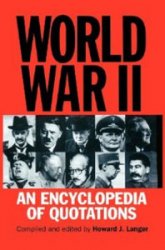Aristotle had raised, but not solved, a question about whether all correlatives are really simultaneous in nature: knowledge and the knowable appear to be correlatives, but the knowable exists prior to becoming known. Al-FarabI, following Porphyry, gives a solution, namely that potential knowledge is simultaneous with the potentially knowable, and actual knowledge with the actually known.
In the Christian world, the notions of substance and relation were used by Saint Augustine to cast philosophical light on the doctrine of three Persons in one God. Augustine pointed out that when a relation inheres in a subject, the subject is something substantially besides being subject to the relation: the slave is substantially a man. What the subject is substantially came later to be called the relation’s ground [fundamentum]. Augustine held that God is a substance (not in the sense that God can receive contrary qualities through change, but in the sense that God is an essence not present in anything as a subject). The Father, Son, and Holy Spirit are said with reference to one another, in just the way that correlatives are; at the same time, each of them is substantially God. Augustine’s elaboration of the doctrine of the Trinity became the source of a long tradition of theological thought.
Given that a relation inheres in its subject but stands toward its object, the question arises whether these two aspects are independent of each other, and if they are mutually independent whether one or both are essential to relations. Robert Kilwardby (d. 1279) took these two aspects to be mutually independent and took the second Aspect (standing toward an object) to be the essential one. Given the independence of a relation’s two aspects and given that its ‘‘towardness’’ is what is essential to it, there can be no contradiction in supposing a relation to stand toward an object while not inhering in any subject. If, then, the mark of a substance is taken to be not inhering in any subject, it follows that there is no contradiction in supposing a relation to be a substance.
This argument is rich in theological potential, because in Augustine’s treatment of the Trinity the three divine Persons are supposed to be both constituted by their relations and substantially identical with the Divine Essence. Clearly, if the Divine Essence is a substance, and if it is not to be contradictory for the Father to be identical both with Paternity and with the Divine Essence, then it should not be contradictory for a relation to be a substance.
Aristotle had pointed out that a relation of similarity can come to characterize a subject without any change occurring in the subject (e. g., because there is a change in the relation’s object). Some medieval thinkers concluded from this example that no relation has any ontological content: A relation adds nothing to its subject beyond what is already contained in the relation’s ground. Among the proponents of this view were Henry of Ghent (d. 1293) and Richard of Middleton (d. 1300).
Among the opponents of the view was Walter Burley, who posited five elements in a relational situation: the relation itself, its subject, its ground, its terminus a quo and its terminus ad quem. Thus, he clearly distinguishes the ground of a relation from its subject and from its terminus a quo. For example, the relation of mastery is grounded in a power to coerce. Both the relation and its ground are distinguished from the man who happens to be a master (the subject) and from that master considered purely as a master (the terminus a quo). Mastery is a relation, the man is a substance, and the master is an aggregate of a substance and a relation. Both mastery and the man are per se beings, but the master as such is a per accidens being. Thus, what is a per se being (the man) is a relative only per accidens, whereas what is a per se relative (the master) is merely a per accidens being.
Robert Alyngton (d. 1398) follows Burley on many points, but posits four instead of five elements in a relational situation. These, it turns out, are the four per se beings that enter into any real relation: the relation itself, the subject (the man who happens to be master), the ground (the power to coerce), and the per se being that happens to be the terminus ad quem (the man who happens to be slave).
Alyngton’s analysis, though original, does not depart from the standard medieval view of relations as inhering in a single subject (i. e., in modern language as monadic properties). A relation does require, besides its ground, two per se extremes. But it inheres in only one of these, namely its subject. The relation does not inhere in its object; rather, the relation’s correlative (e. g., servitude) inheres in the object.




 World History
World History









